Wild Animals on the Tibetan Plateau
While Tibet may be one of the most popular tourist destinations in Southeast Asia, it has one of the most unique wild animals in the world. Many of the indigenous Tibetan species are now facing extinction due to hunting over the last century, which has prompted an extensive protection regime in order to preserve the remaining wild animals on the Tibetan plateau.
The plains, forests, and mountains of Tibet are home to a huge variety of indigenous animal life, with more than 150 species of mammals, around 500 species of birds, 49 reptilian species, 44 different varieties of amphibians, and over 60 species of freshwater and saltwater fish.
Table of Contents
Tibetan Antelopes
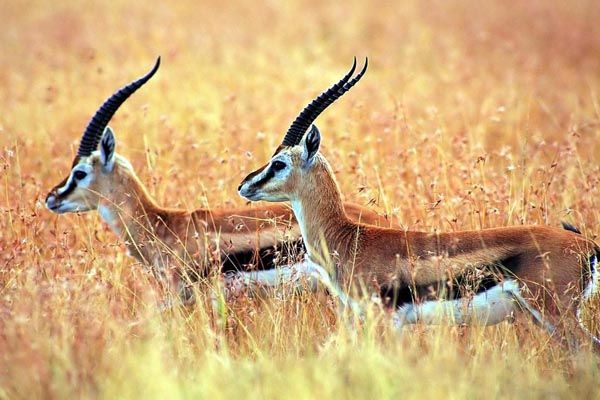
The Chiru, or Tibetan antelope
Once roaming wild across the plains of Tibet in vast herds, the Tibetan antelope, or Chiru, is one of the now rare species of Tibetan animals that have come close to extinction. A species that is native to northern Tibet and Qinghai Province, there are now less than 150,000 mature antelope on the plateau, and it is now under a protection order that restricts it from being hunted at all. The chiru was once hunted extensively for its soft warm wool, which has been used in traditional Tibetan weaving to make shawls and coats. A small creature that stands less than three feet tall, the majority of the remaining animals are now only found in the Changtang Nature Reserve in Nagqu Prefecture of Northern Tibet.
Tibetan Wolf
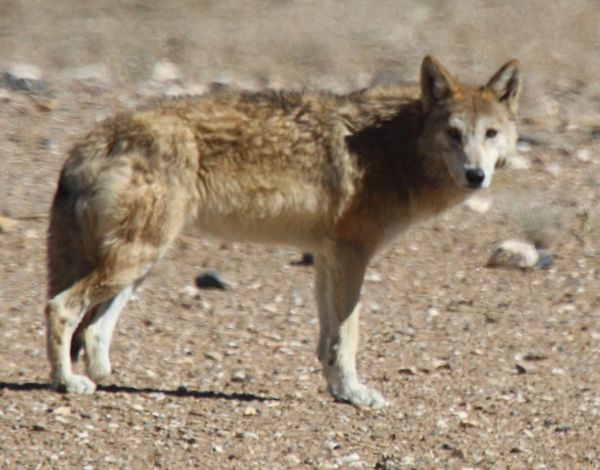
The shy Tibetan wolf caught on camera
A sub-species of the gray wolf that is a native to most of northern China, the Tibetan wolf is now only found in the more remote parts of Tibet and Qinghai Province, as well as in the Ladakh region of Kashmir and parts of Himal Pradesh. In recent years, this rare and beautiful animal has been seen in parts of Upper Mustang in Nepal. Somewhat different from the wolves of China, the Tibetan wolf is believed to have separated from the Chinese genus hundreds of thousands of years ago and is more likened to a fox in shape. With shorter legs and a fuller brush, the Tibetan wolf is a rear sight on the plains of Tibet, preferring to stay in the remote forests and woodlands of the north.
Tibetan Blue Bear
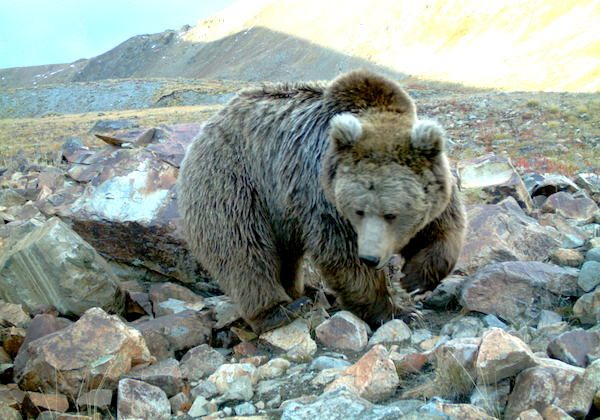
The rare Tibetan Blue Bear
Also known as the Himalayan Blue Bear, this spectacular sub-species of the brown bears found across northern Europe is known locally as Dom Gyamuk. One of the rarest species of bears in the world, it is very rare to sight one in the wild. Mainly known in the west because of furs and skeletons brought back over a hundred years ago, there is very little information about the habitats and ranges of the blue bear and its conservation status is unknown, as it is not known how many remain in Tibet. Only during times of reduced natural food supply are they rarely seen in the high mountain peaks of the Himalayas. The bear has even been cited as the reality behind legends of the “yeti” in the Himalayas, and samples of fur given to Sir Edmund Hillary in his 1960 search for the legendary yeti were later identified as belonging to the Tibetan Blue Bear.
Snow Leopard
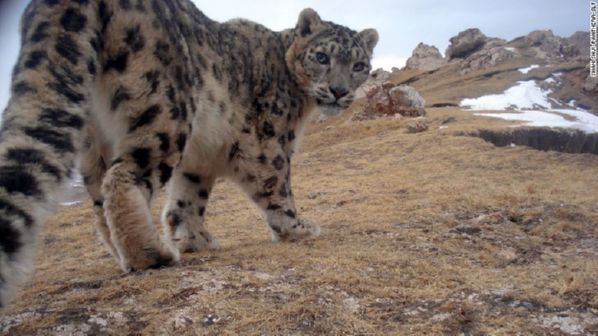
A snow leopard looks back at the hidden camera
Snow leopards are a rare sight anywhere in the world, shying away from people and civilization and remaining in the forests and long grasses of the Tibetan plains. Native to the mountain regions of Central and South Asia, this rare species is now on the protected list in Tibet and can only rarely be seen in the higher mountain areas of the Tibetan plateau. With less than 5,000 remaining snow leopards left in the world, this beautiful and dangerous creature is more populous in Tibet than anywhere else on the planet.
Kiang
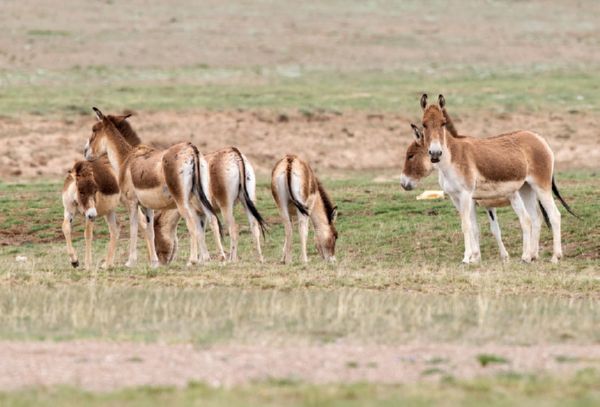
The Tibetan wild ass or “kiang”
The largest of all the world’s wild asses, the Kiang is a native to the Tibetan plateau and can be seen roaming in large herds across the plains and prairies of the region. Standing around 13.3 hands tall, or around 140 centimeters, the Tibetan ass has a larger head with a very blunt muzzle and a convex nose. They are easily recognizable by their upright mane, the hair down the back of the neck, which never grows more than 4-5 inches in length. With a dark brown coat and a lighter underbelly, this wild ass may not be rare, but it is a beautiful example of Tibetan wildlife at its most stunning.
Thorold’s Deer
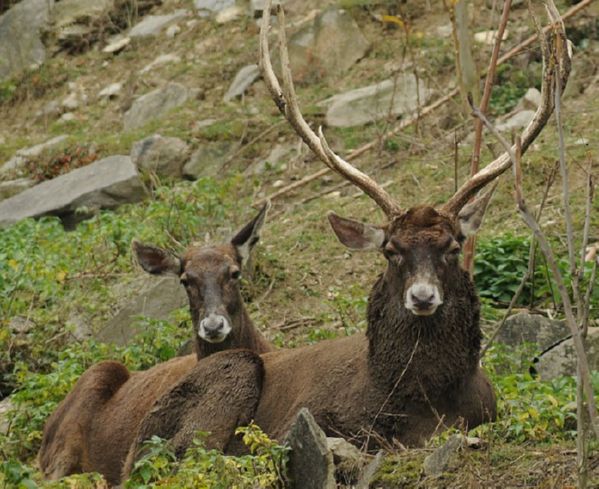
Thorold’s deer, or white-lipped deer, in Tibet
Found only in the high altitudes of the eastern area of Tibet, in grasslands and forests, this beautiful creature is also known as the white-lipped deer because of the unique white fur around the muzzle and lips and is one of the rarest species of deer on the planet. In Chinese, it is known as the Baichunlu, which translates to “white lips”, which is where the name originates. One of the largest species of deer in Southeast Asia, Thorold’s Deer was extensively hunted for its wide antlers, which can measure up to 110 centimeters across each individual antler. The antlers are also unique in that all the tines are on the same plane, making them rare around the world. It is believed that there are only around 7,000 adult deer remaining in the world, in scattered populations in Tibet, Sichuan, Qinghai, and Gansu, with a few in northwest Yunnan.
Pika
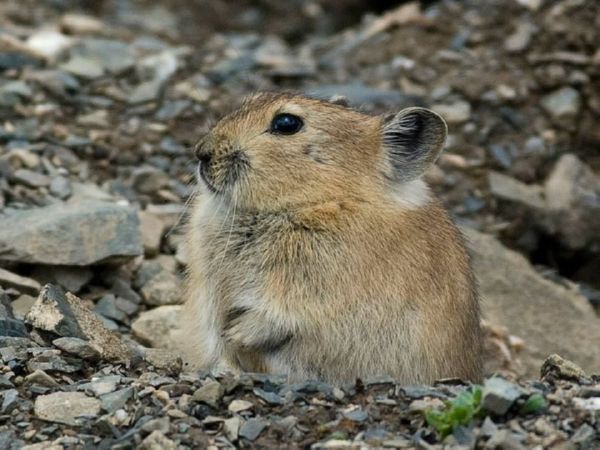
The cute plateau pika
A small mammal native to the Tibetan plateau, the pika is possibly one of the cutest of all the wild animals that live on the roof of the world. With short limbs and a rounded body, this cute creature has big round ears and no tail. Closely related to the common rabbit found across the world, the pika lives in the mountain areas of the plateau, on the rocky slopes, and are one of the highest living mammals on the planet, often found at altitudes between 6,000 and 7,000 meters. While it is not rare and endangered, it is rare to see one out in the open, as they have excellent hearing and run to their burrows at the slightest hint of danger.
Wild Yaks
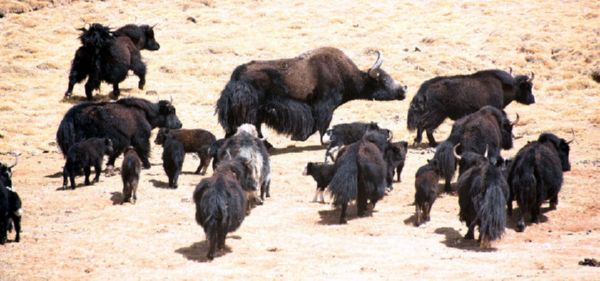
Wild yaks roaming the plains of Tibet
Wild yaks are the large bovids that are native to the Himalayas and are the ancestor of Tibet and Nepal’s domestic yaks, which are an important part of the economy and ecology of Tibet. Wild yaks and domestic yaks are believed to have separated as a species more than 1.5 million years ago and are now considered to be differing species. The largest native animal in Tibet, wild yaks are the second largest bovids in the world, after the Gaur or Indian Bison. Standing around two meters tall at the shoulder, these huge mammals are now considered an endangered species in Asia, with a massively reduced population of only around ten thousand remaining on the plateau.
Many wildlife photographers visit Tibet to take photos of Tibetan wildlife animals and it is one the most difficult task for the photographers as these wild animals are not easy to see in wild. These are the most endangered species on Tibetan plateau.
Recent Posts
Can Tourists Visit Tibet?
Exploring the Beauty of Tibetan Handicraft
The Ultimate Guide to Tibet Tours, Travel, and Trekking Adventures
All Categories
- About Tibet
- book a Tibet tour
- Buddhism Practice
- Budget Tour
- China-Tibet Train
- Customized Tibet tour
- Historical Sites
- Hot Springs in Tibet
- News
- Photography in Tibet
- Tibet attraction
- Tibet Group Visa
- Tibet Motorcycle Tour
- Tibet Small Group Tours
- Tibet Tours and Tibetan Tour Guide
- Tibet Train
- Tibet Travel FAQs
- Tibet Travel Information
- Tibet Travel News
- Tibet Travel Permit Update
- Tibet Travel Prices Rises
- Tibet Trek
- Tibet Trekking Tour
- Tibet weather and climate
- Tibet Wildlife animals
- Tibet Winter Tour
- Tibetan Buddhism
- Tibetan Cultural Features
- Tibetan Culture and Poeple
- Tibetan Festivals
- What to see in Tibet


